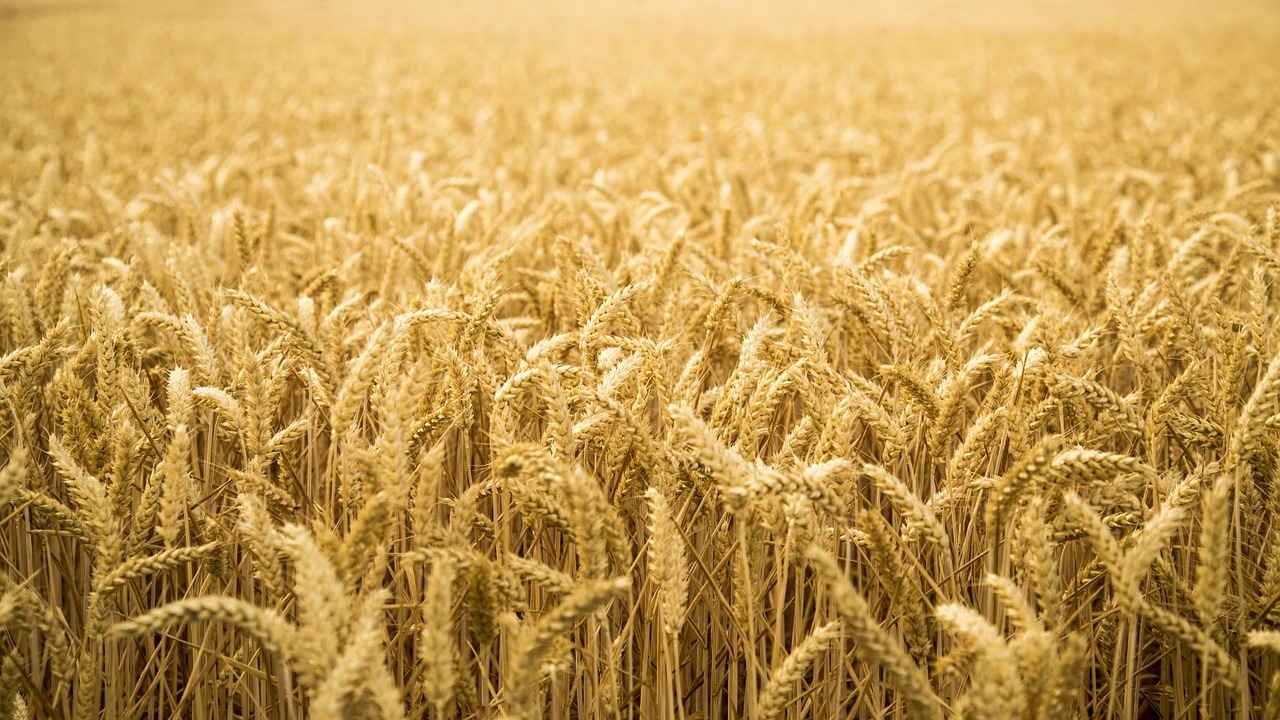Food in the field
Interview with
Clearly there are a lot of options but the first point at which we can intervene in  the food supply chain is crop development. Alison Bentley from NIAB, the National Institute of Agricultural Botany chewed over the question of selective plant breeding and crop development with Kat Arney...
the food supply chain is crop development. Alison Bentley from NIAB, the National Institute of Agricultural Botany chewed over the question of selective plant breeding and crop development with Kat Arney...
Alison - Yes, I guess the big turning point for crop production, or for wheat production specifically, was the green revolution which brought about reduced height in our wheat and allowed it to use nutrients more efficiently and move those nutrients into the grain. And that was really that start of this increase in yields. Since that time, yields have incrementally increased, so we've got about a 1% increase in yields each year and this is really this is the product of the breeding process. So of breeders crossing the best varieties with each other; selecting the best individuals and moving those forward into farmer's fields.
Kat - So what sort of timescale are we talking about? When did this revolution really start?
Alison - So that revolution started in the 1970s with the introduction of these reduced height types allowing the plants to use the nutrients more efficiently and it's now that we're looking at the challenge of feeding this ever-growing population; that we're saying, actually, we need more than these incremental increases to be able to fulfill that need.
Kat - Presumably, there is some kind of limit though? You can't eventually grow wheat out of nothing...
Alison - Yes, and that's one of the questions, I guess. How far can we push it? Do we know kind of ultimate type we're looking to end up with? And then we also have to consider the environmental implications of being able to grow the maximum amount of wheat on a specific amount of land, and the kind of inputs that's required to do that, and the pest control, and the insect control.
Kat - So wheat is really the plant that you're interested in - Tell me about of some of the ways that you're trying increase, I guess, the efficiency of wheat so it gets more and more 'bang for it's buck' from the field.
Alison - Yes. So wheat is very genetically complex, so it combines in it's genomes the genomes of three ancestral grass species and these came together over a number of chance hybridisation events in nature. And so what we're doing within our programme at NIAB is going back to the start of this process and looking at these progenitor species, which occur across a huge geographical range, and saying "what can we get from this diversity which we can then use to improve wheat."
Kat - So you're looking at the ancestors of wheat and saying "where did it come from and can we make it again?"
Alison - Exactly. So we're basically going back to the start of wheat and saying "can we make this again" and then "can we use this as a vehicle to access diversity that's not already available in wheat itself and what does this diversity give us, which we can then transfer to breeding."
Kat - So you've talked a lot about breeding and how, since the 70s, it's been traditional plant breeding techniques. You know, persuading plants to have sex with each other that have brought the changes that we've seen, but we've heard a lot about things like 'genetic modification' and now some of these 'genome editing' technologies that are starting to come online. Would it be more efficient to use those rather than trying to breed plants together to see what comes out?
Alison - I think they're exciting technologies but one of the, I guess, the limitations is that you need to have a gene identified or a set of candidate genes which you know want to manipulate. And when we talk about something like yields or the way a plant uses nitrogen fertilizer, those are very complex traits which also interact with the environment. So, underlying those traits, such as yield, you've probably got the additive effect of hundreds, or maybe even thousands, of genes. So, your actual practical ability to make a plant genetically modified for all of those individual genes is very challenging so it's more likely that we can use information about that genetic makeup in an additive way using sequencing technology and new technologies coming online are going to be able to use that information for breeding. But, of course, genetic modification, gene editing are exciting technologies and when we talk about something like a disease resistance gene, then you can see huge potential for that technology to be used.
Kat - You think when people drive past a field of wheat, do they think gosh, that is a product of all this breeding and all this technology?
Alison - Yes, I mean, that's amazing that that's a product of hundred of thousand of years of domestication, evolution. The technology that's gone into that is really immense.
- Previous The facts of food security
- Next Supermarket Sweep









Comments
Add a comment